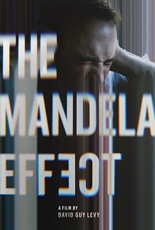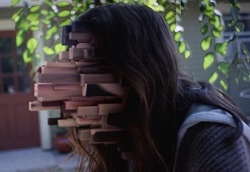
 A psych-101 Reddit thread drives the plot of David Guy Levy’s The Mandela Effect, referring to the phenomenon of “remembering” something that has never been true, whether it’s Curious George having a tail or the Monopoly man wearing a monocle. However insignificant these false pop-culture memories are in real life, they’re bestowed with literal life-or-death stakes in this screen telling.
A psych-101 Reddit thread drives the plot of David Guy Levy’s The Mandela Effect, referring to the phenomenon of “remembering” something that has never been true, whether it’s Curious George having a tail or the Monopoly man wearing a monocle. However insignificant these false pop-culture memories are in real life, they’re bestowed with literal life-or-death stakes in this screen telling.
Video game designer Brendan (Charlie Hofheimer, an alum of Levy’s Would You Rather) learns of the theory from his brother-in-law (Robin Lord Taylor, John Wick: Chapter 3 — Parabellum). Perhaps because Brendan is grieving the drowning death of his daughter (Madeleine McGraw, Ant-Man and the Wasp), he latches onto the theory with an unhealthy fervor. Before long, he’s stalking a college professor (Outland’s Clarke Peters, obviously a Morgan Freeman stand-in) who believes Brendan is witnessing the result of alternate realities colliding, and whose quantum computer can allow them to alter the world’s “code” so they can bring the girl back to life. Or something like that.
 Providing no shortage of Big Ideas, Levy and his Would You Rather collaborator Steffen Schlachtenhaufen have the makings of a Matrix-style head-tripper, but the pertinent information to transition into that all-important third act is delivered with such immediacy (as opposed to urgency) that the climax feels rushed — which truly may be the case, as the film clocks in at a brief 80 minutes, credits included. Had Brendan and the professor looked before they leapt, so to speak, The Mandela Effect might have resonated with its intended power. Lost in that sprint is a late subplot about the mental state of Brendan’s wife (Aleksa Palladino, The Irishman), although she does pop back up just long enough to contract what looks to be a medical condition known in the field as Jenga Face.
Providing no shortage of Big Ideas, Levy and his Would You Rather collaborator Steffen Schlachtenhaufen have the makings of a Matrix-style head-tripper, but the pertinent information to transition into that all-important third act is delivered with such immediacy (as opposed to urgency) that the climax feels rushed — which truly may be the case, as the film clocks in at a brief 80 minutes, credits included. Had Brendan and the professor looked before they leapt, so to speak, The Mandela Effect might have resonated with its intended power. Lost in that sprint is a late subplot about the mental state of Brendan’s wife (Aleksa Palladino, The Irishman), although she does pop back up just long enough to contract what looks to be a medical condition known in the field as Jenga Face.
The fun of the film is all upfront, if viewers know to look for hidden-in-plain-sight examples of the Mandela effect before the narration alerts you to them; it’s like playing Life magazine’s Picture Puzzle feature, in which readers are challenged to spot the differences between two photos. With paranoia brewing stronger as the story progresses, one wonders what a director with demonstrated skill in this arena before — say, Pi’s Darren Aronofsky or Primer’s Shane Carruth — could do with it. —Rod Lott
